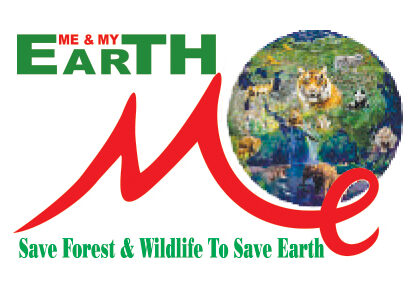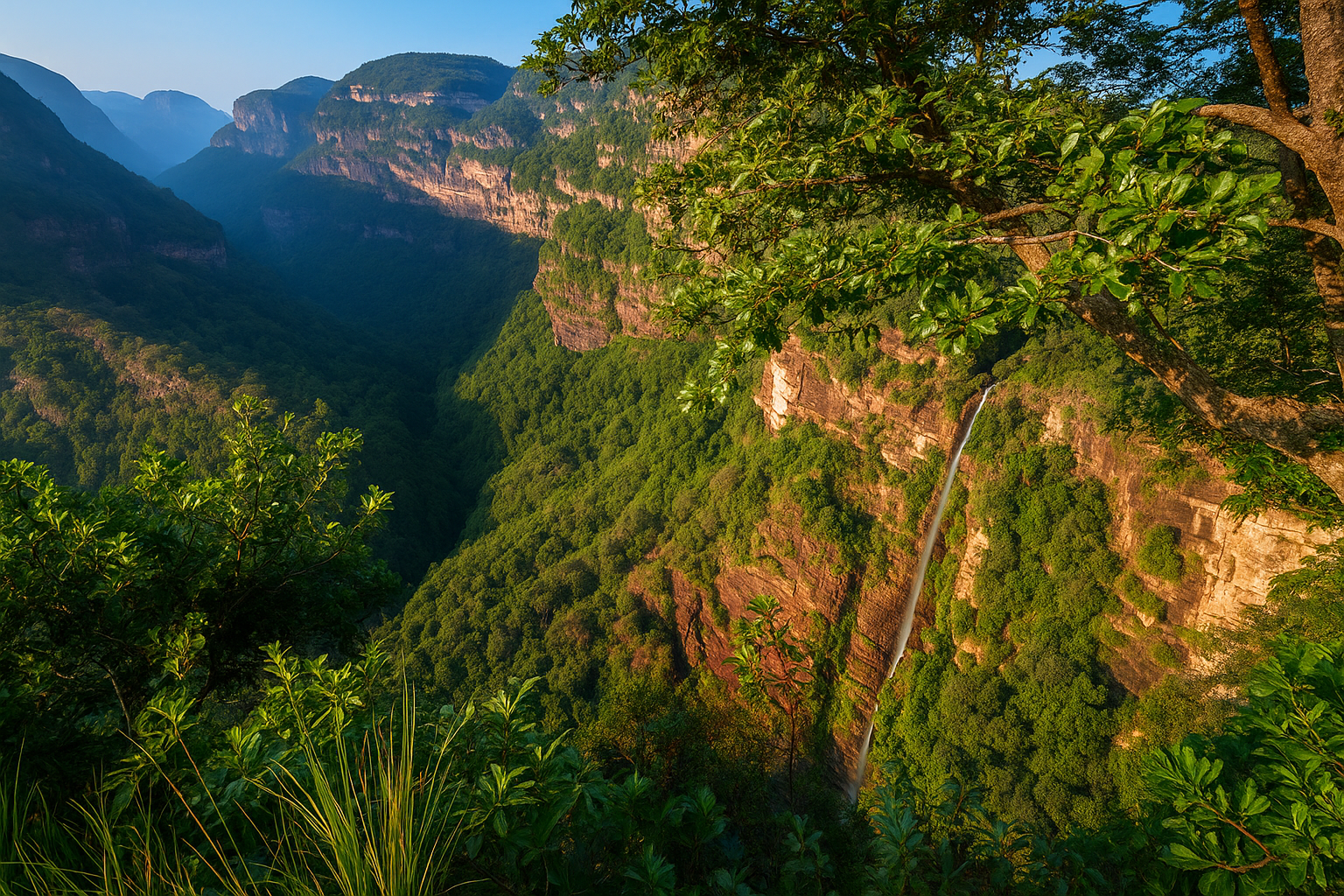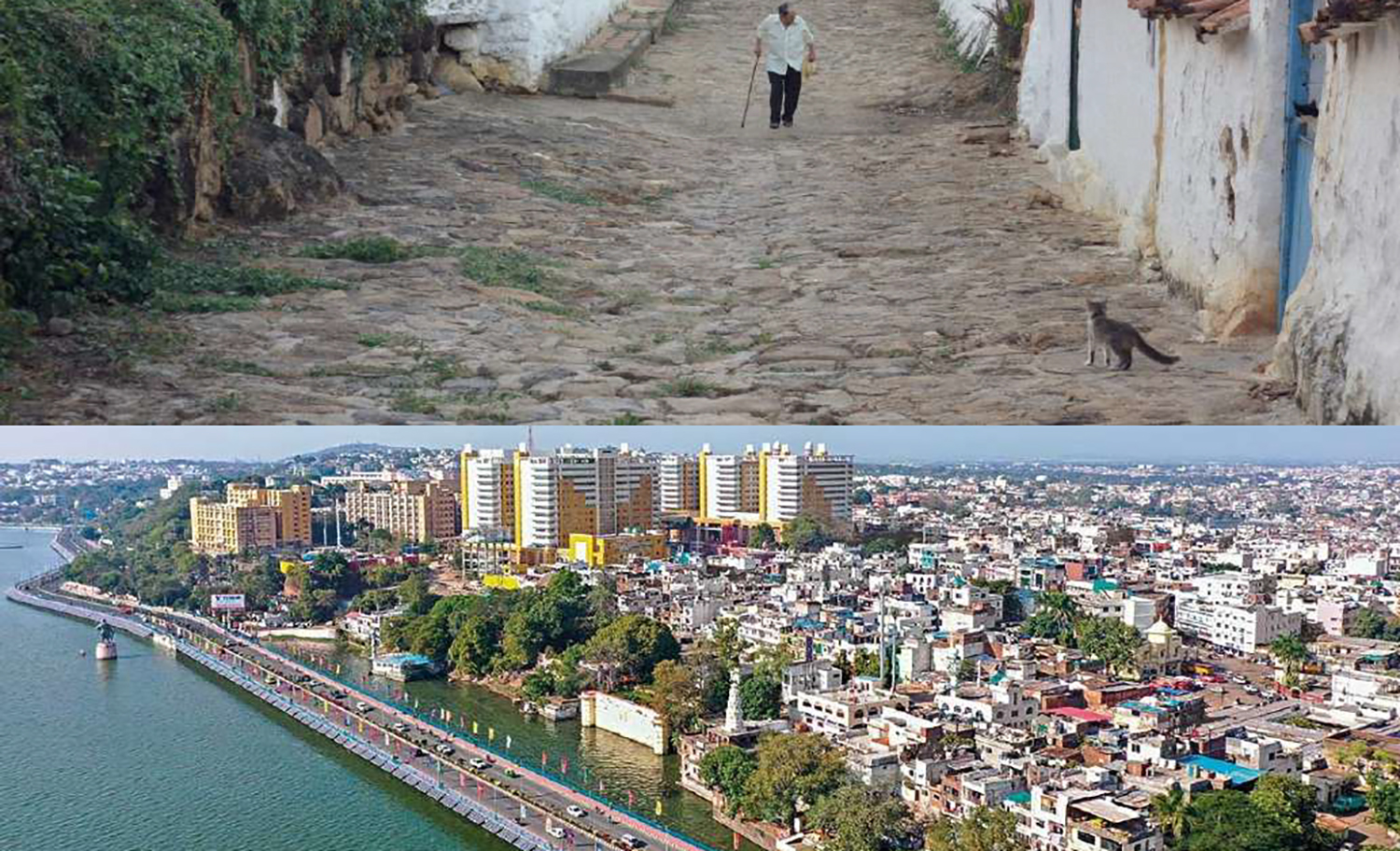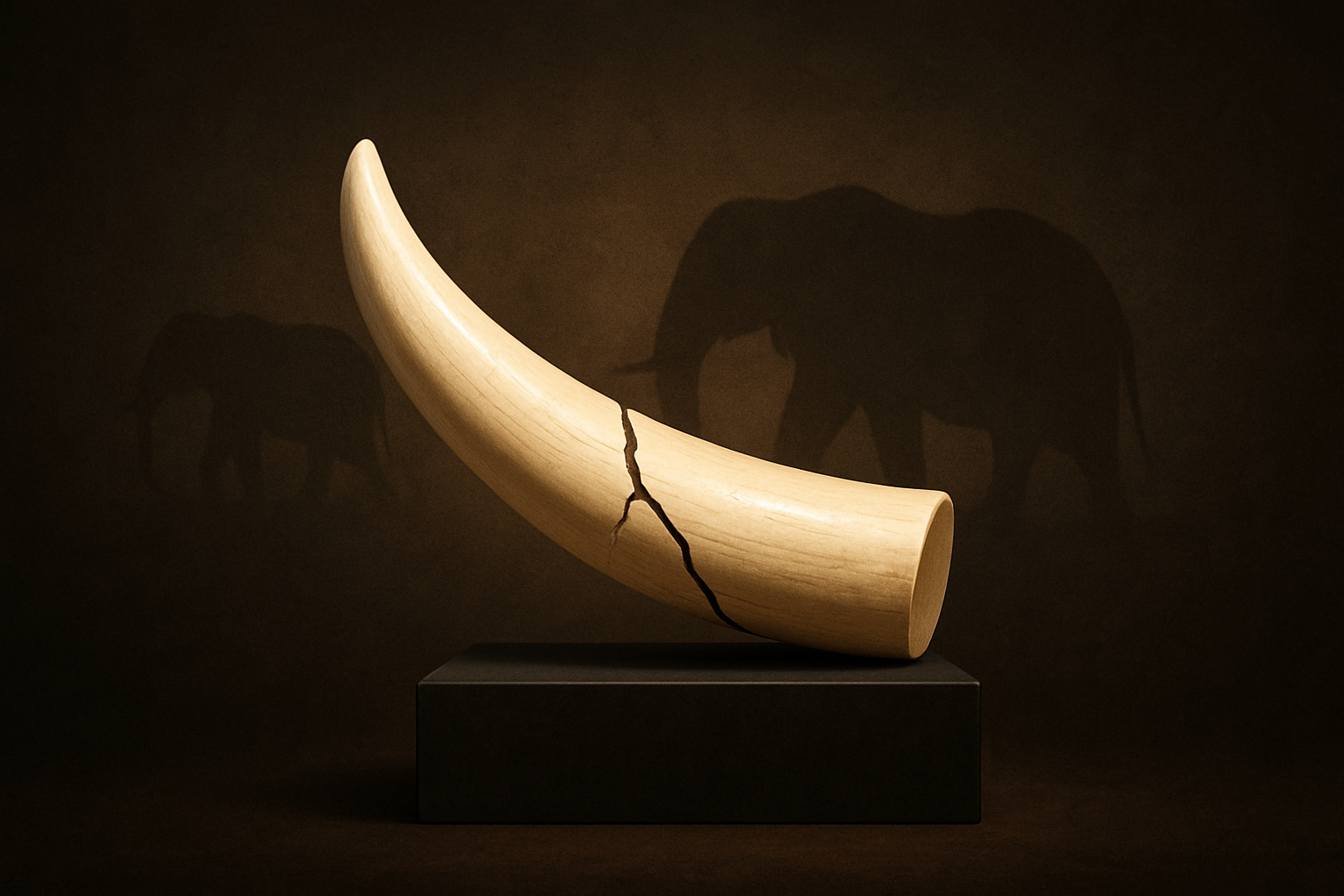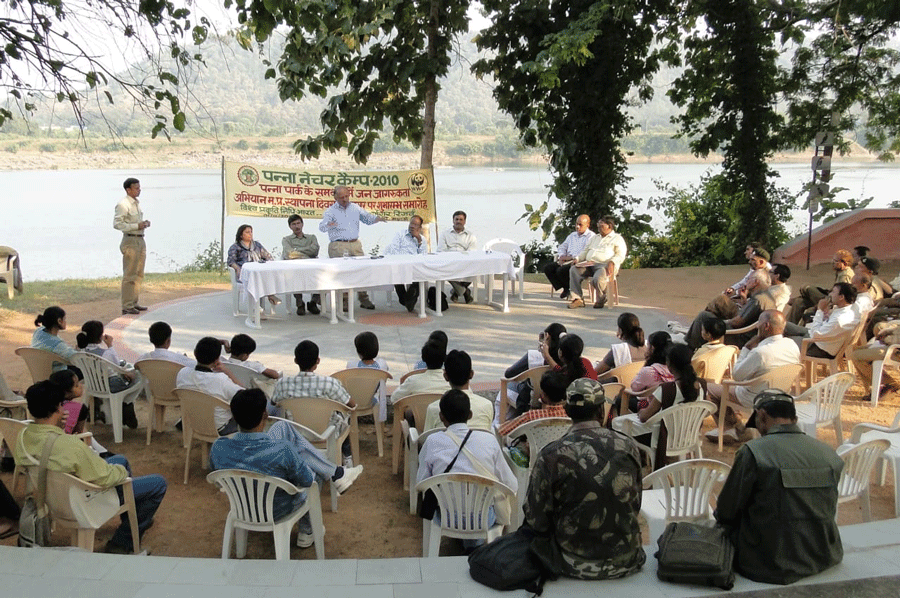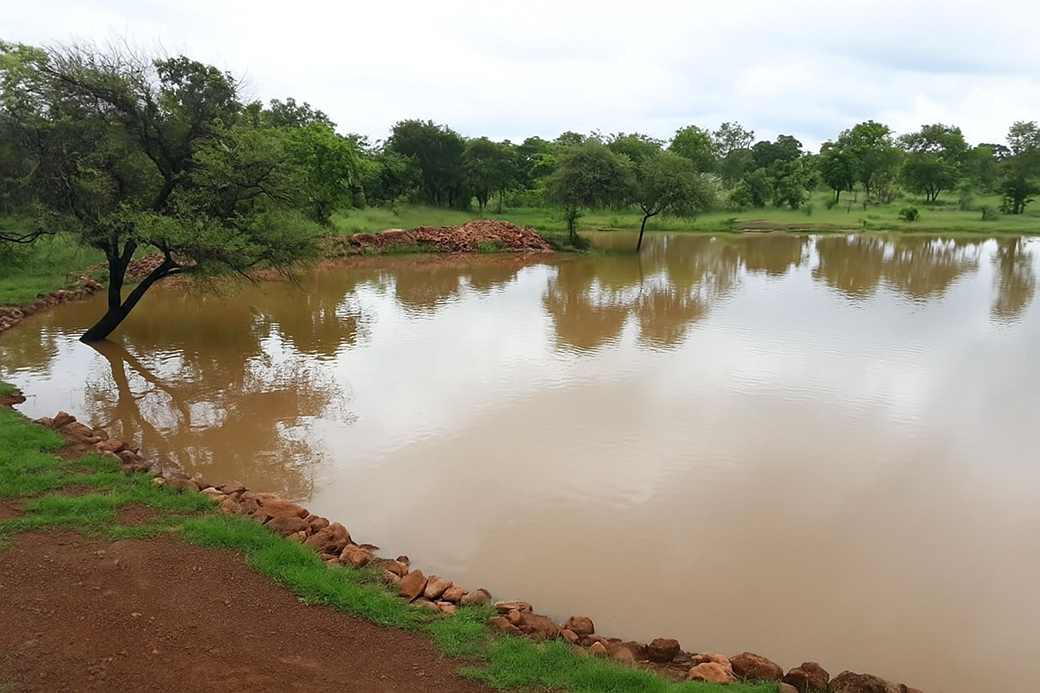Economic Valuation of Ecotourism in Van Vihar National Park, Bhopal, Madhya Pradesh
Samarth Jaiswal & Prof. S.P Singh
BACKGROUND:
• Evaluate the economic significance of ecotourism at Van Vihar National Park.
• Van Vihar National Park is one of the most popular ecotourism destinations in the country, attracting over 1 million visitors annually. The park is home to a diverse range of wildlife, including tigers, leopards, sloth bears, spotted deer, and over 200 species of birds.
• Ecotourism activities at Van Vihar National Park include jeep safaris, nature walks, and boat rides. Visitors can also learn about the park’s wildlife and conservation efforts at the interpretation Centre
OBJECTIVE:
• Assess benefits of ecotourism for national parks and local communities.
• Find out how the ecotourism revenue can create a stable source of income for park.
• Study the economic benefits of ecotourism, including spending on lodging, food, and transportation.
In this study two method of economic valuation have been used
a) Travel cost method and
b) Tourism Expenditure Method.
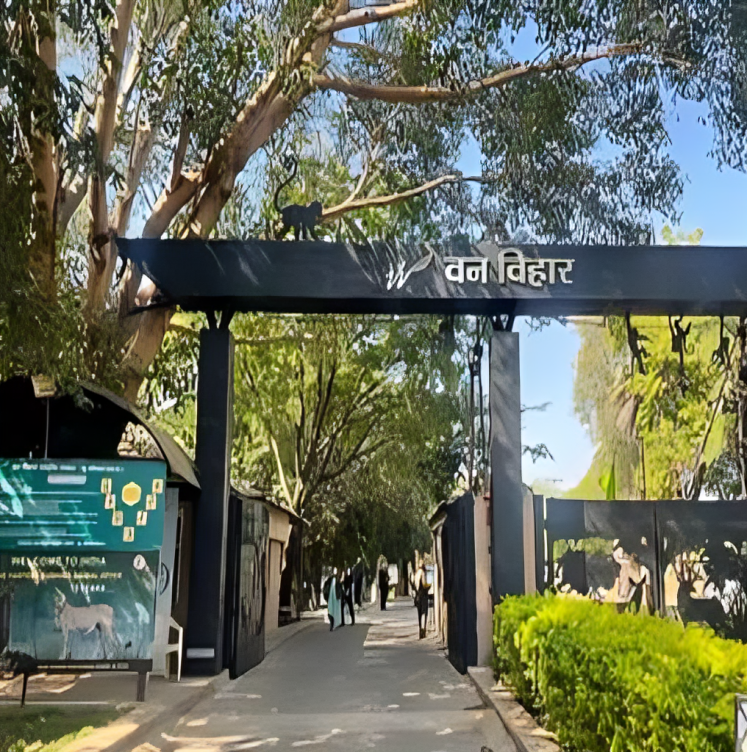
1. Travel Cost Method – Based on the Assumption of the value of a recreational site is reflected in the amount of money that people are willing to spend to travel to and visit the site. e.g. cost of transportation, lodging, food, and other expenses. Both primary and secondary data was collected through structured questionnaire and interviewed 25 respondents after pretesting of questionnaire. The key informants were the tourists, entering in the national park. After data collection, data compilation and tabulation work were done on computer. Simple statistical techniques were also used in the interpretation of data.
2. Tourism Expenditure Method – Based on the assumption that economic value of ecotourism is equal to the sum of the direct, indirect, and induced economic impacts of visitor spending. This method provides a more complete picture of the economic value of ecotourism than other methods, such as the travel cost method, which only takes into account the direct economic impacts of visitor spending. After analysis of data, the study suggests based on the tourist response that more Animals, Especially Tigers should have kept in the national park. The information sharing will create an awareness level about the animals. For creating new infrastructure and fencing near by the upper lake will avoid the risk of incidents. It is recommended that more investment is required for maintenance of the animal and park. The economic valuation differs due to change in Park policy, entry fee, and expenditure elasticity is governed by the income elasticity of individuals
AREA SITE:
• Van Vihar National Park, renowned eco-tourism destination located in Bhopal, the capital of Madhya Pradesh, India
• Van Vihar National Park is known for its unique concept of being a “no captive” zoo, unlike traditional zoos, animals here are not kept in cages but are allowed to roam freely in their natural habitat.
• Visitors to Van Vihar National Park explore the park through guided safaris and nature walks. It provides an opportunity for visitors to observe and appreciate wildlife in its natural habitat while promoting conservation.
ANALYSIS:


1. Travel Cost Method – The travel cost method used to evaluate the recreational values of the site such as national park, wildlife sanctuaries etc. & the willingness of the tourists to spend amount of money to travel & visit the site, it includes the cost of transportation, lodging, foods & various other expenses.
The Parameters involved in the method are:
1. Location of the visitor home total distance travelled by visitor
2. Number of times the visitor had visited the site in past/current year or season
3. The total amount of time spent at the site
4. Travel expenses incurred by visitor
5. Willingness to pay (WTP) for Entrance fee by the individuals at the Van Vihar Park WTP(I)= f (Y, S, C, L, T) Y= Income S= Socio economic variables C= travel cost L= Length of stay T= Times of visit at Van Vihar national park.
• Hotel expenses represent the largest portion of total trip expenditures, constituting 35% of the overall budget. This indicates that lodging is the most significant expense during the trip.
• Travel expenses comprise the smallest portion of the total budget, accounting for only 10%. This suggests that transportation costs are relatively low compared to other expenses.
• Food expenses rank as the second least expensive category, making up 20% of the total expenses. This implies that dining expenses are not a major focus during the trip.
• The dominance of hotel accommodations in expenditure allocation suggests that the destination, being a renowned tourist spot, offers relatively expensive lodging options.
• The low proportion of travel expenses indicates that the trip is likely short in duration, with limited expenditures on transportation.
• Minimal food expenses further support the notion that dining is not a primary focus during the journey, reinforcing the emphasis on other aspects such as sightseeing or activities.
• Overall, the data reflects a journey with relatively high expenses, primarily attributed to the substantial allocation of funds towards hotel accommodations.
The table shows the annual income of respondents in India, by age and gender. The average annual income for all respondents is INR 500,000. Men have a slightly higher average annual income than women (INR 510,000 vs INR 490,000).
The table also shows that income varies with age. The highest average annual income is for respondents aged 45-54 (INR 600,000). The lowest average annual income is for respondents aged 18-24 (INR 300,000).
FACTORS:
Education: Younger responders are more likely to be enrolled in school or to have graduated recently, which implies that they may be paid less and have less work experience.
Experience: The likelihood of older respondents having more job experience and possibly having been promoted to higher-paying positions is higher.
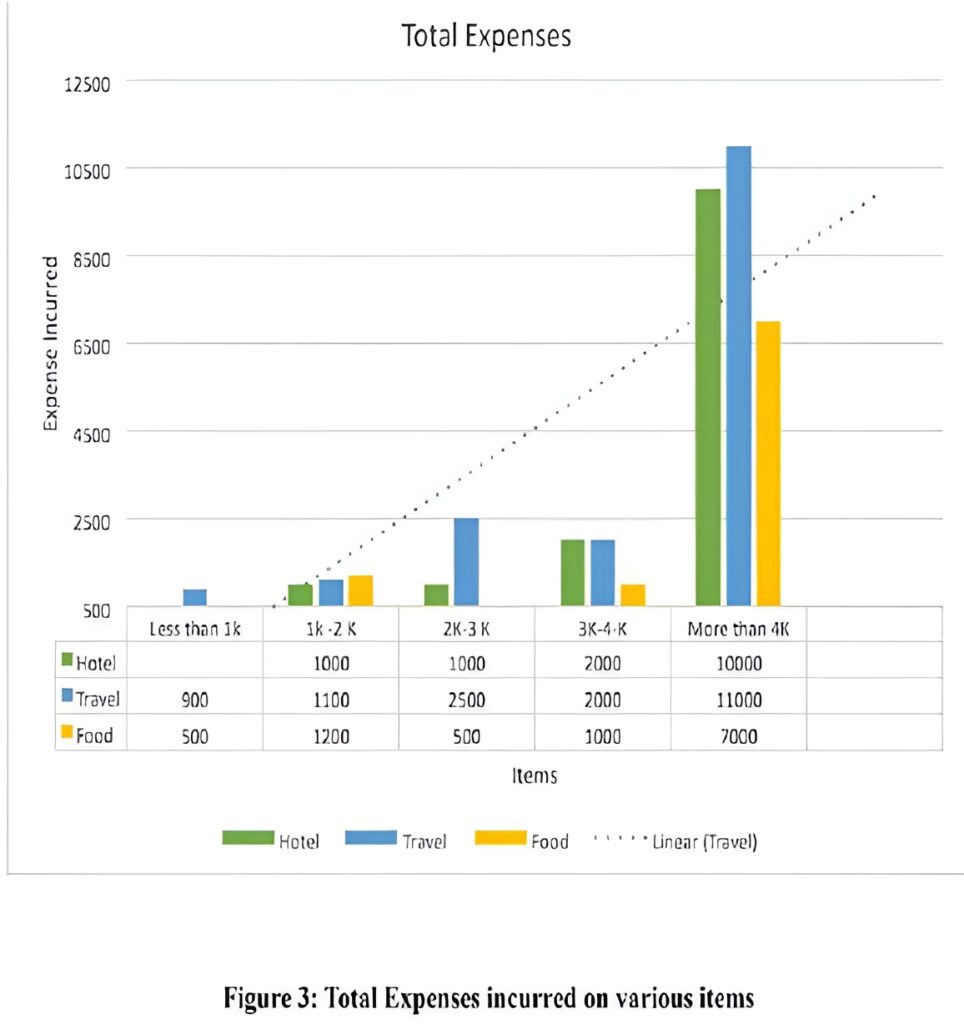
Industry: Entry-level jobs in lower-paying industries may be more common among younger responders. The likelihood that older respondents have advanced to more senior roles in higher paying industries may be higher. Tourist income elasticity is greater than one for all age groups (luxury good for all age groups) Price elasticity of tourism demand is less than one for all age groups (tourism is an inelastic good for all age groups)
2. Tourism Expenditure Method – The tourism expenditure method provides a more complete picture of the economic value of ecotourism than other methods, such as the travel cost method, w only takes into account the direct economic impacts of visitor spending.
Parameters:
1. Accommodation.
2. Food & Transport Expenditure.
3. Entry Fees.
Factors:
• Increase in the number of tourists visiting the park.
• Increase in the price of park entry fees etc.
• Park’s unique biodiversity, scenic beauty.
• Educational and recreational facilities.
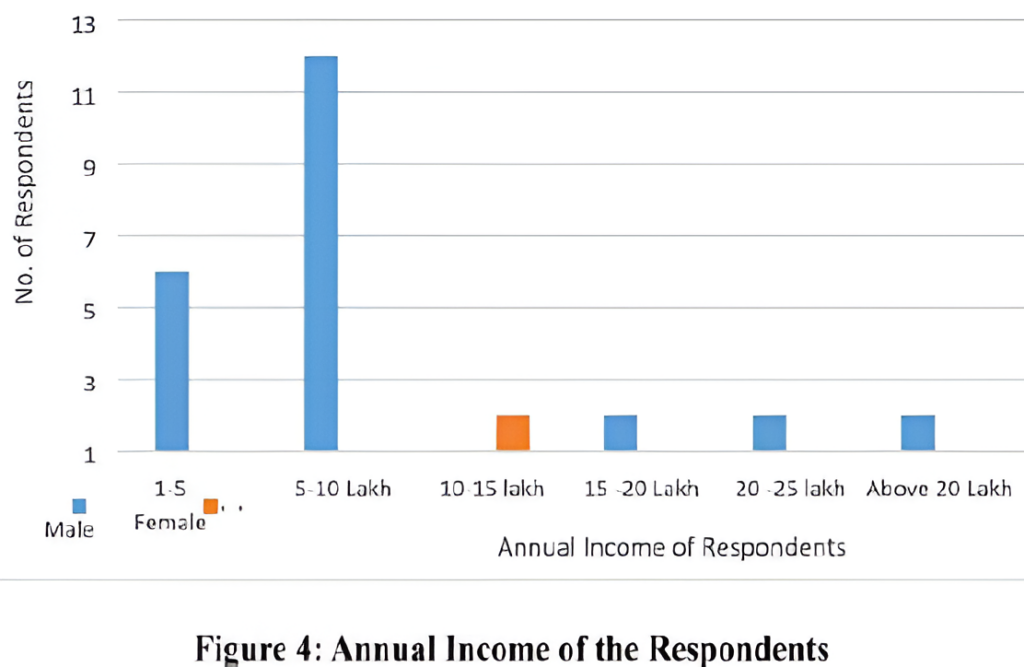
• The table show the data presented from the financial years 2016-17 to 2023-24. The table shows the total income generated in Van Vihar National Park has increased steadily over the past seven years, from INR22,193,924 in 2016-17 to INR 51,855,290 in 2022-23. This represents an increase of over140% over the seven-year period.
Findings:
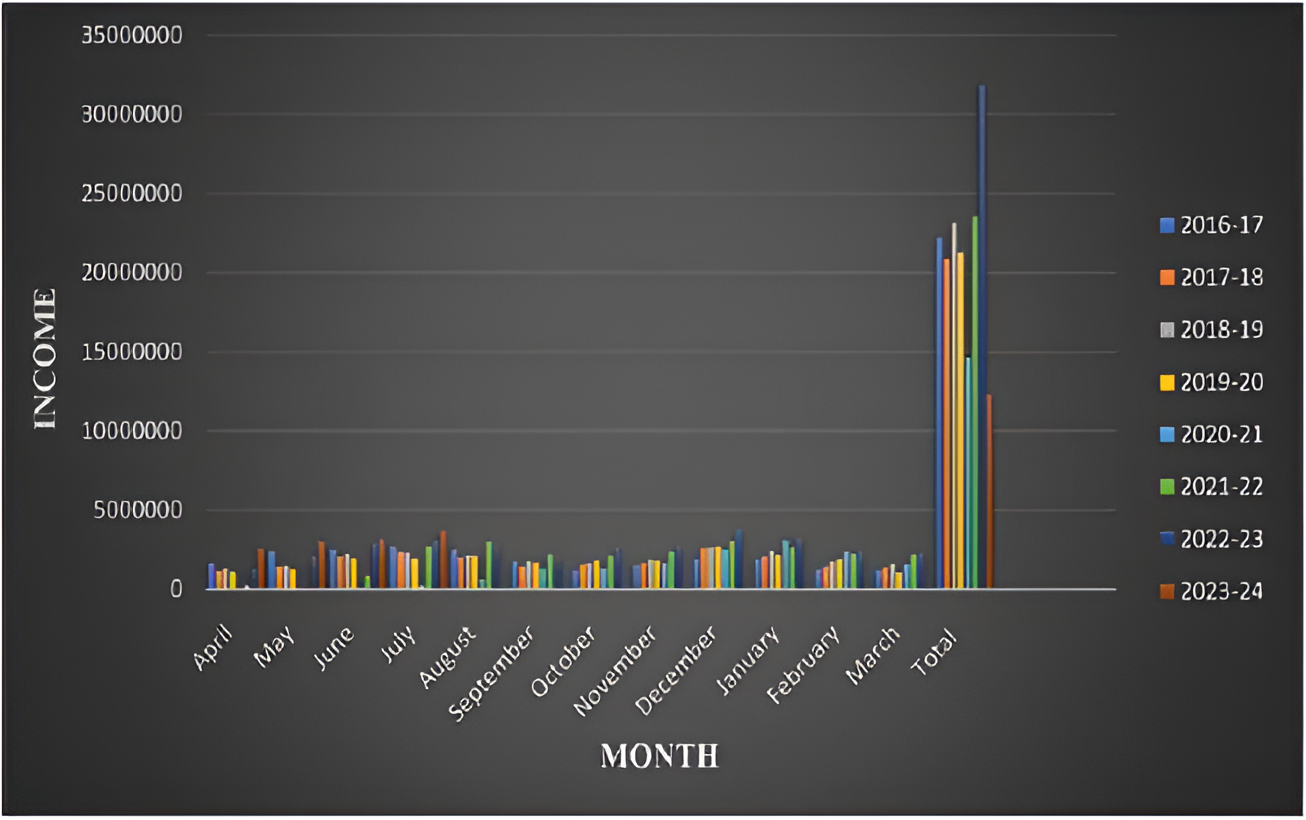
1. Total income generated in Van Vihar National Park has increased steadily over the past seven years, from INR 21,241,465 in 2016-17 to INR 51,800,000 in 2022-23.
2. The largest source of income for Van Vihar National Park is tourism, which accounted for INR 42,985,000 of the total income generated in 2022-23.
3. The increase in income generated by Van Vihar National Park is likely due to a number of factors, including an increase in the number of tourists visiting the park, an increase in the price of park entry fees etc..
The table shows the distribution of visitors in the Van Vihar National Park, Bhopal. The data is presented for the financial years 2016-17 to 2022-24.
1. The total number of visitors to the park has increased steadily over the past seven years, from 419,641 in 201617 to 785,860 in 2022-23. This represents an increase of over 64% over the seven-year period.
2. The largest number of visitors to the park are domestic tourists, accounting for 785,860 of the total number of visitors in 2022-23.
This is followed by foreign tourists (75,695) and students (2,200).
Findings:
• The total number of visitors to Van Vihar National Park has increased steadily over the past seven years, from 419,641 in 2016-17 to 785,695 in 2022-23.
• The largest number of visitors to the park are domestic tourists, accounting for 623,107 of the total number of visitors in 2022-23.
• The increase in the number of visitors to Van Vihar National Park is likely due to a number of factors, including the park’s unique biodiversity, scenic beauty, and educational and recreational facilities.
• The increase in the number of visitors to Van Vihar National Park is a positive development, as it helps to raise awareness about the park’s importance and the need for its conservation. It also generates revenue for the park, which can be used to improve its infrastructure and facilities.
Conclusion:
• Study the economic evaluation of ecotourism helps to assess in income generation for the park from the tourist, through various means i.e., entry fees of the visitor, other tourism related activities.
• Income generated can be used to improve the infrastructure & facilities provided to the animals, and carry out the important conservation & maintenance activities.
• The Ecotourism supports local businesses such as hotels, restaurants, and souvenir shops & businesses get benefit from the increased number of visitors to the park.
• Improve the lives of people living in communities around the park.
Recommendation:
Based on the conclusion and analysis of primary and secondary data, some of the important suggestions have been provided from the tourist point of view
1. Increase the number of animals, particularly tigers, in the park.
2. Disseminate more information and raise awareness about animals.
3. Construct additional fencing along the riverside, especially in areas where young children are likely to be present.
4. Invest more resources in maintenance and provide more food for the animals.
5. Enhancement of water access for tourists.
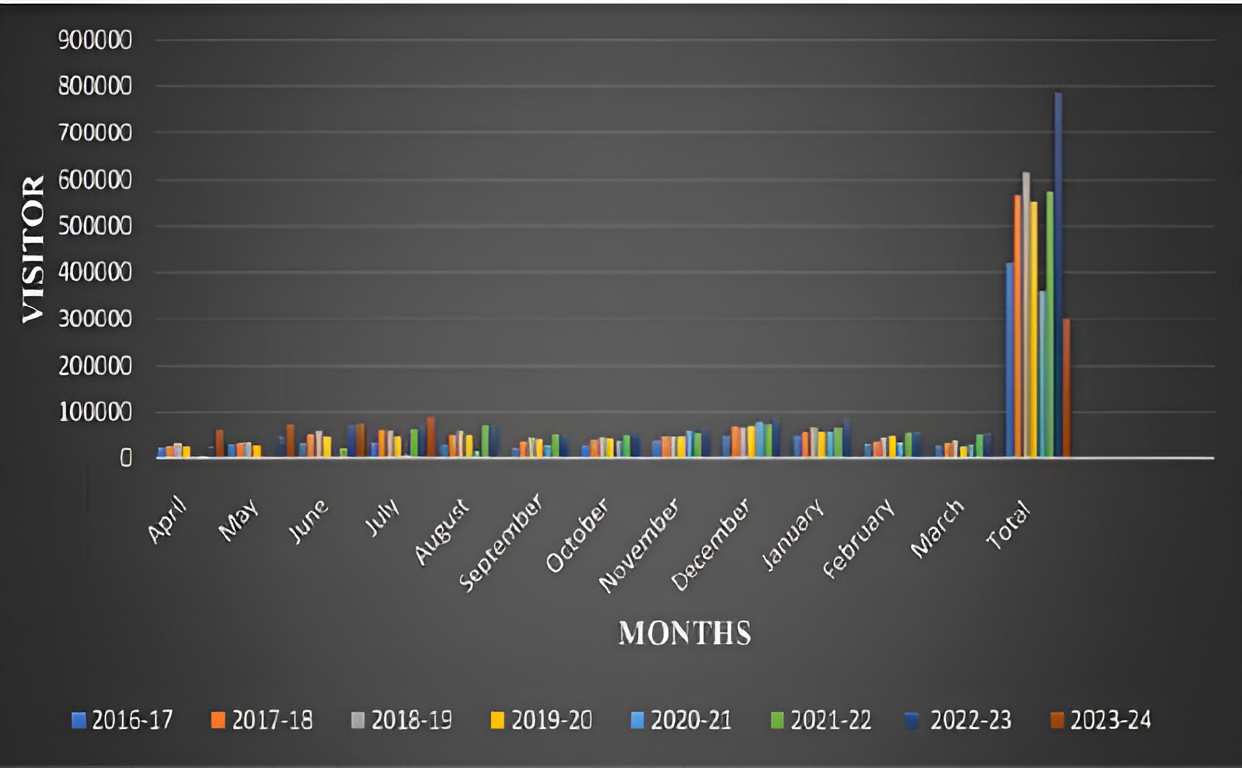
Acknowledgement:
I would like to express my heartfelt gratitude to respected DR. Ravichandran (IFS) & Director, IIFM Bhopal, DR. Manmohan Yadav (Dean, IIFM Bhopal), DR. Shardendu Pandey (Chairperson, Summer Internship Committee IIFM Bhopal), Mrs. Padmapriya Balakrishnan (IFS) & Director, Van Vihar National Park & all others individuals who contributed to the successful completion of the study on “Economic Valuation of Ecotourism in Van Vihar National Park.” This project has been an enriching journey, and your support has played a vital role in its accomplishment. Firstly, I extend my deep appreciation to the management and staff of Van Vihar National Park for their cooperation and invaluable insights throughout the research process. Their dedication to wildlife conservation and ecotourism has made this study possible. I am indebted to the visitors of Van Vihar National Park who generously participated in the surveys and interviews & the willingness to share their experiences and preferences has been instrumental in shaping this report. I sincerely acknowledge my parents Mr. Sanjay Jaiswal & Mrs. Madhu Jaiswal, but acknowledge blessings of my parents that they have taken me to this position.
References:
Bhattacharya A.K, Basnyat Birendra (2012): Economics of Ecotourism in Van Vihar National Park: A Study of Visitor Perception and Willingness to Pay. Kamra, Krishnan A. (2001), Economics of Eco-tourism. Kanishka Publishers, New Delhi
Bhattacharya A. K (2005), Ecotourism and Livelihoods: Capacity Building for local Authorities
Bhattacharya A.K, Banerjee.S, Saxena.V, (2003) Community Based Ecotourism: A Case Study of Karwa -Van Vihar National Park Catchments, Bhopal (Madhya Pradesh), India, Environmental Science, Geography, Sociology
Biswal Ashok, Singh Divya, Kumar Himanshu & Guided by Singh S.P(2017):
Economic Valuation of van Vihar National Park, Bhopal. Me & My Earth Journal Pg No – 49 Year:
1 Issue 4- Bhopal, July-September 2017
Singh S.P, Kumar Pankaj, Mishra Miloni, Saha Kumar, Mukesh (2018): Economic Valuation of Sair Sapata, Bhopal. Me & My Earth Journal Pg No: 27 Year; 2, Issue -6 Bhopal, January -March 2018.

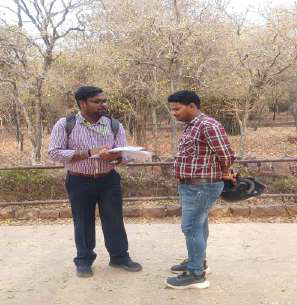
Authors:
1. Prof. IIFM Bhopal
2. Research Scholar IIFM

